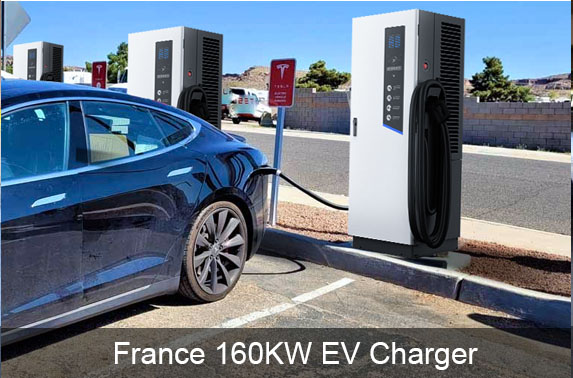
Products
Fast, Reliable, Everywhere

Solutions
Efficient, Innovative EV Charging Solutions.
News
We are committed to the innovation and application of EV charging.
Additionally, built-in security measures for limiting access and user communication displays are included in private and public usage chargers. They may contain a controller to be integrated with a building management system.
Such massive "refrigerators" along the highway, in larger towns, and at petrol stops are third-level chargers for offices and public spaces. They have advanced technologies: 480 volts, hundreds of amps, and 100 to 150 kilowatts. These items use so-called DC-charging or continuous current. It takes to charge the automobile ranges from 10 to 30 minutes completely.
EV chargers use high amperage, high-load electrical equipment. As a result, while looking for EV Chargers, you should search for charging stations that include automated plug-out error checking and power cancellation, as well as adherence to international safety compliances such as certifications or safety standards.
Before you go out and get an electric car charging system, one of the most important considerations is how weather-resistant it is. Since most chargers are placed outside or in public spaces, you should make sure that any chargers you install on your property are made to endure all sorts of weather.
Electric car chargers are sold under a wide range of brand names today, but not all are reliable or trustworthy. Choose a trusted seller who offers high-quality products and has earned favourable reviews from past customers. If you buy an electric car charger from them, find out if they will still offer the service. One of the industry's most respected producers is PIWIM ENERGY.
The amount of electricity needed by different electric vehicles varies. Specific models charge more rapidly than others, depending on the technology and battery used. By considering its specs, pick a charging station with a power rating suitable for your electric car.
Pick charging stations with insurance to cover any potential damage to automobiles in addition to a guarantee. It should not be shocking that spending money on a trustworthy setup carried out by skilled specialists is also well spent with the intention of increasing safety. If an EV charger doesn't have a guarantee that includes repairs or refunds, you shouldn't invest your money in it.

There are many levels of electric vehicle fast charging available. The levels show how quickly an electric vehicle's battery can be charged. For electric cars, there are three distinct charging levels.
Plugging a gadget into a typical 120-volt household socket allows for level 1 charging. For every hour it is connected to the car, trickle charging typically extends the range of an electric vehicle or plug-in hybrid electric vehicle by 3 to 5 miles. For most commuters, an extra 30 to 50 miles of range should be sufficient, so an overnight charge should be adequate. An EV battery may need more than one day to charge completely.
It is the most helpful way to charge. The only satisfying method to own an electric car is to charge it at home; thus, it is also the most advantageous since it is the fastest way to charge an electric vehicle at home. The maximum charging rate of the vehicle determines this range.
The quickest type of charging currently accessible is level 3, sometimes known as rapid charging. Between 3 and 20 miles per minute, level three charging can extend the range of an electric car. At Level 3, alternating current (AC) is not utilized to charge devices; instead, direct current (DC) is used. Levels 1 and 2 use AC to charge devices. Level 3 chargers are uncommon in home settings since they operate at greater voltages than those used for Level 1 and Level 2 charging.
Electric vehicle fast charging is a technique for giving their batteries a speedy recharge. An electric car's battery may be charged quickly, as opposed to slowly, over several hours. When it comes to offering premium charging stations for electric vehicles, PIWIN is the market leader. Our business has received certification, and the items we sell have also received certification in the areas for which they were designed.
